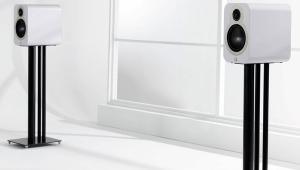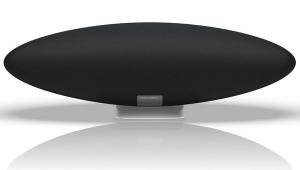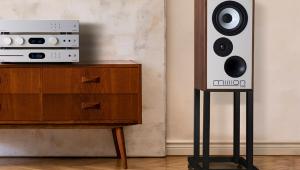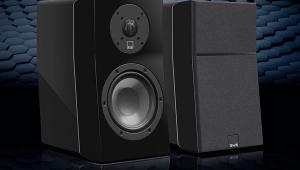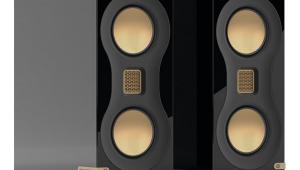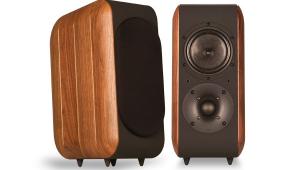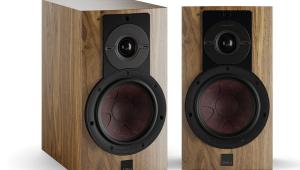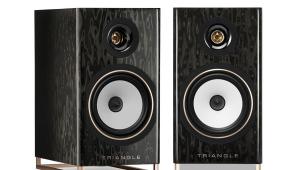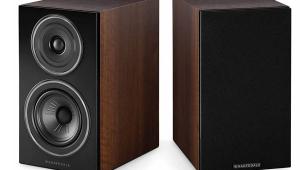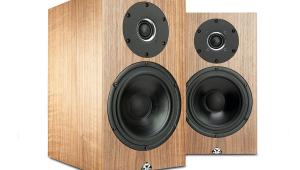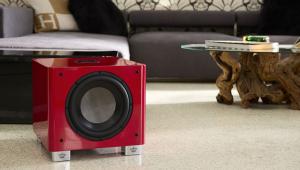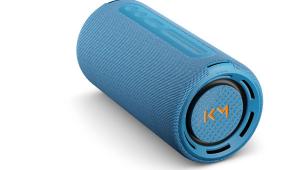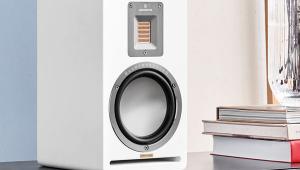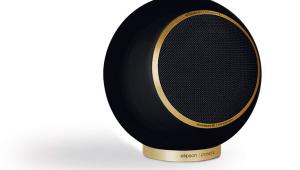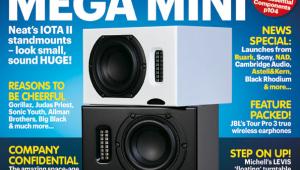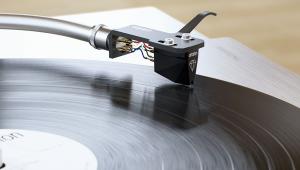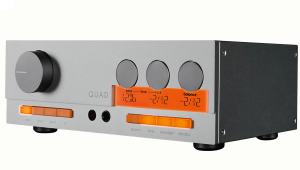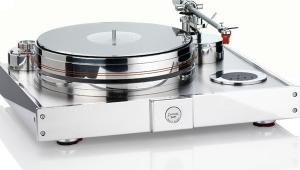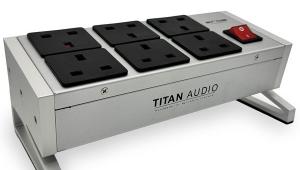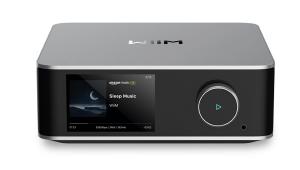Sonus faber Lumina I
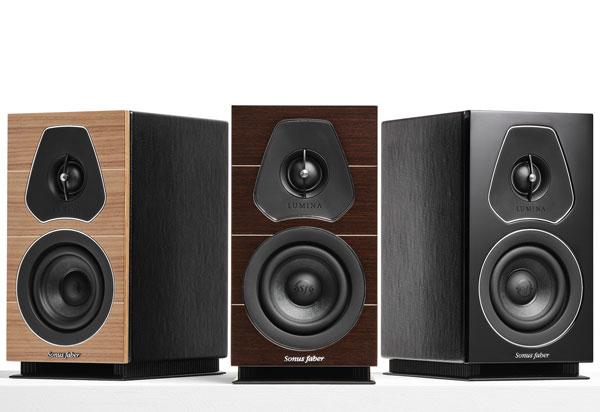
 Representing the entry-point for Sonus faber ownership, the Lumina range is significantly different to any other speaker from the company that has preceded it. We have already looked at the larger floorstander of the family, the III in HFC 469, and now it’s the turn of the I; the smallest and most affordable Sonus faber speaker money can buy.
Representing the entry-point for Sonus faber ownership, the Lumina range is significantly different to any other speaker from the company that has preceded it. We have already looked at the larger floorstander of the family, the III in HFC 469, and now it’s the turn of the I; the smallest and most affordable Sonus faber speaker money can buy.
The I is a two-way standmount design that makes use of the same Damped Apex Dome tweeter as the rest of the Lumina range. This is a localised damping system that is intended to prevent unwanted early roll-off at the upper frequencies. It is visible as a brace that runs north/south across the front of the dome with the actual dampening point being right at the centre. The dome is 29mm across and upper frequency response is quoted at 24kHz.
The other driver is rather more notable. Like the rest of the range, it’s a development of a conventional paper cone that mixes natural fibres into a cellulose pulp to improve rigidity. The most significant aspect of the Lumina I’s fitment is that this driver is 120mm and that includes the surround and is employed solely for midrange work. Given that many rivals at this price are larger, it leaves the Sonus faber looking a little on the small size. The quoted low-frequency response is 65Hz with no roll-off figure quoted.
In order to help this rather dinky driver achieve a convincing low end, there is an unusual port arrangement. There’s an integrated plinth and the gap between this and the cabinet acts as a front-mounted slot port, which should allow for a significant volume of air to be moved without it becoming audible. It should also make the speaker easier to place, although the claimed sensitivity of 84dB and a 4ohm impedance means extremely low power devices might struggle a little to get the best from it. One relatively unusual feature, shared with other Sonus faber designs is that you can bi-wire the Lumina I if you wish.
The design employs the same themes as the larger Lumina III, but arguably with more success than its bigger sibling. The decision to wrap the flat sides of the cabinet in leather is a good one even if it is largely decided by the price. Using wood veneer all the way around would have drawn attention to the use of these flat sides more than the leather and it gives the cabinet a character all of its own. The correspondingly smaller multi-layer wood front panel also looks good and further strengthens the argument that having a smaller amount of high-quality wood is more aesthetically pleasing than large sections of a more indifferent quality finish. Three choices are available; light walnut, dark wenge and a piano black. Both wood finishes have a maple inlay, which looks lovely.
High quality or not, there is an unavoidable sense of ‘is that it?’ when you unbox the speaker. £800 to £1,000 is a keenly contested price point for standmounts and there are rivals that make the Lumina I feel a little on the small and weedy side when you look at the bald numbers. It is undeniably extremely well made, however. As well as employing decent materials throughout, the cabinet feels impressively inert and all the major points of contact feel extremely solid and confidence inspiring.
Sound quality
The Lumina I has a secret weapon in its fight against larger and notionally more capable rivals – nobody seems to have told it that it’s a small speaker. Connected to a Rega Brio integrated amplifier (HFC 446), it delivers a larger and more authoritative sound than the dimensions might suggest possible. There are two different factors at work here and they combine with impressive results.
The first is the bass output is more substantial than you might expect. Without the port becoming audible or any perceivable strain to the performance, the 65Hz roll-off figure is effortlessly bettered in room. This still probably won’t be your first choice to deliver gut-rattling bass, but there is far more shove here than you might assume from a slim-shouldered, 28cm-tall standmount. In some ways, the Lumina I is the antithesis of the Lumina III, which never quite delivers the low-end you expect.
Having filled out the lower registers, it is no less effective at filling the room. Without sounding diffuse or confused, the Sonus faber creates a big and believable soundstage. No Harm the haunting opener to In Dream by Editors, begins with a simple percussion sequence, sparse keyboards and Tom Smith’s stunning and emotive vocal turn across the top. The Lumina I locks Smith to the centre and ensures the bass is weighty enough to convince and, as the track grows, it retains a level of order and control that ensures nothing sounds flustered or congested. Alongside these neat spatial tricks are some more traditional Sonus faber virtues. There’s a sweetness to the tonality that gives voices and stringed instruments in particular a certain richness that is intrinsically appealing.
It would be wrong to describe the Lumina I as ‘warm’ or in any way soft, though. What it does with the same assurance as its larger relatives is avoid any perceptible ‘edge’ to the performance. The caveat to this is that if you really push it, it will eventually yield to the laws of physics and begin to sound strained and confused. You do have to be driving it rather harder than you might expect for this to be the case, however.
Something the Lumina I shares with the larger floorstander is that this is an entertaining performer. The superbly lively and propulsive Kinshasa by Laurent Bardainne and Tigre D’Eau Douce is a joy. That richness with instruments ensures that the lead saxophone leaps out of the mix and the complex, overlapping percussion is fast, fluent and entertaining. This lightness of touch isn’t dependent on fast music either. There is a simple and compelling immediacy to what it does that benefits everything you play and leaves many rivals feeling slightly leaden in comparison.
Conclusion
The Lumina I is a little speaker with big ambitions. If you have a barn to fill with heavy dub, it probably won’t be your first choice, but assuming that this is some sort of delicate, near field device for chamber music is also a mistake. Instead, it manages to sound bigger, more assured and room-filling than you would expect from looking at it. It does all this while still delivering on the virtues expected of a Sonus faber and looking and feeling very pleasant at the same time. This is a superb little standmount; both a worthy entry point to the Sonus faber family and a genuine star in its own right. ES
DETAILS
Product: Sonus faber Lumina I
Type: Two-way standmount loudspeaker
FEATURES
● 29mm silk dome tweeter
● 120mm pulped paper mid driver
● Quoted sensitivity 84dB/1W/1m (4ohm)
 |
Inside this month's issue:
Ruark R610 music system and Sabre-R standmount speakers, PMC twenty.23i Active, floorstanders, English Acoustics Downton preamplifier, Bluesound NODE ICON preamp/streamer, Ortofon Concorde Music Blue MM cartridge and much, much more
|
